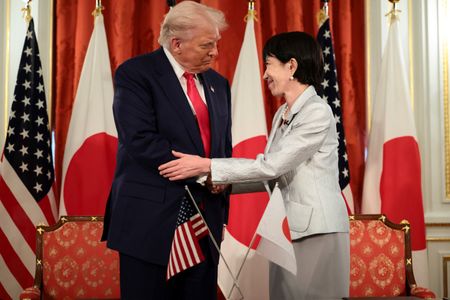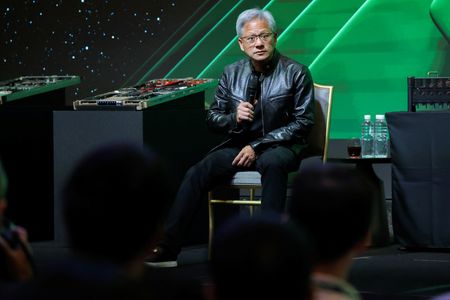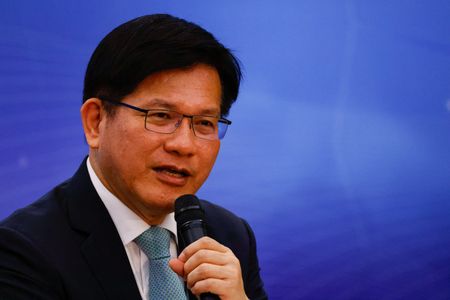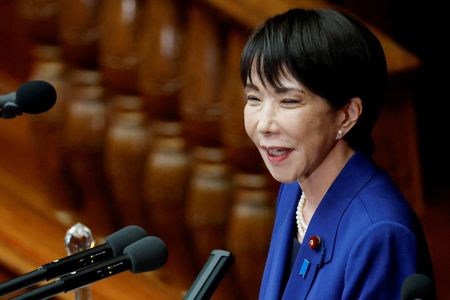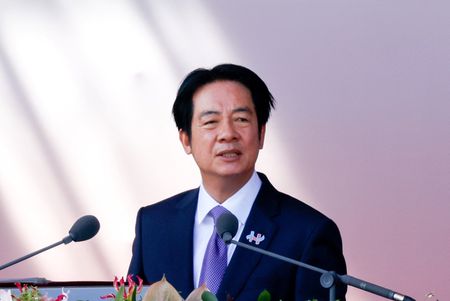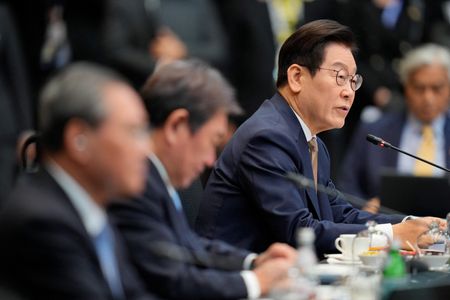By Trevor Hunnicutt and Katya Golubkova
TOKYO (Reuters) -Japan and the United States agreed to a deal on new-generation nuclear power reactors and rare earths, as Tokyo seeks a way back to export markets for its nuclear technology and both look to reduce China’s dominance over key electronic components.
U.S. President Donald Trump and Japanese Prime Minister Sanae Takaichi signed a framework agreement on Tuesday for securing the supply of rare earths used in everything from cars to fighter jets.
They signed the documents, which included critical minerals, at the neo-Baroque-style Akasaka Palace in Tokyo, beneath three chandeliers swathed in gold ornamentation, as aides applauded.
They made no direct public mention of China, which processes more than 90% of the world’s rare earths, making it the source of each country’s concern about its mineral supply chain. Beijing has recently expanded export curbs.
Trump and Chinese President Xi Jinping are set to meet on Thursday on the sidelines of the Asia-Pacific Economic Cooperation in South Korea to discuss a deal that would pause steeper U.S. tariffs and Chinese rare earths export controls.
Japan and the United States would use economic policy tools and coordinated investment to speed “development of diversified, liquid, and fair markets for critical minerals and rare earths”, the White House said in a statement.
They aim to provide financial support to selected projects within the next six months, it added.
Both countries would consider a mutually complementary stockpiling arrangement and cooperate with international partners to ensure supply chain security, it said.
While China dominates global rare earth extraction, the United States and Myanmar control 12% and 8% respectively, says Eurasia Group, with Malaysia and Vietnam covering processing – where China is also the top player – of another 4% and 1% each.
NUCLEAR POWER, OTHER AREAS
In a factsheet for the talks, Japan mentioned mutual interest to cooperate in construction of new generation AP1000 nuclear reactors and small modular reactors (SMRs).
These could involve Japanese companies such as Mitsubishi Heavy Industries, Toshiba Group and others, along with other cooperation areas.
Nuclear power, including next-generation reactors, as a matter of a greater energy security, affordable power supply and export technology, is among the top priorities of Takaichi, who became Japan’s first female prime minister last week.
Japan shut down all its reactors after the Fukushima Daiichi nuclear disaster, caused by a powerful 2011 earthquake and subsequent tsunami. China, France, South Korea and Russia, currently dominate global exports of nuclear power technology.
A separate White House statement also mentioned as a potential area for cooperation fusion energy, favoured by Takaichi.
About 20 companies from Japan and the United States have shown interest in potential investment projects forming part of a promised $550-billion investment package, the factsheet issued by both countries showed.
But it did not mention further U.S. LNG offtake or upstream investments that Japanese companies have recently been expanding.
Before Trump’s Asia trip, the U.S. urged buyers of Russian energy, including Japan, to cease imports, and put sanctions on Moscow’s two biggest oil exporters, Rosneft and Lukoil, to push the Kremlin into talks to end the Ukraine war.
Japan has stepped up U.S. LNG purchases in the last few years as it tries to diversify away from its key supplier Australia and prepare for the expiry of supply contracts with Russia’s Sakhalin-2 LNG project, which Mitsui and Mitsubishi helped launch in 2009.
In June, JERA, Japan’s top LNG buyer, agreed to buy up to 5.5 million metric tons a year of U.S. LNG under 20-year contracts, with deliveries starting around 2030. This is roughly the volume Japan imports annually from Sakhalin-2.
Most supply from Sakhalin-2, which meets 9% of Japan’s gas needs, ends in the period from 2028 to 2033.
Japan buys less than 1% of its oil imports from Russia under a sanctions waiver due to expire in December, with the bulk of its oil supply covered by the Middle East.
Last week alone, Japan’s biggest city gas supplier, Tokyo Gas, signed a preliminary deal to buy 1 million metric tons per annum of LNG from the Alaska LNG project, following a similar September announcement by JERA.
JERA pledged $1.5 billion for gas assets in Louisiana in its first foray into upstream production in the United States, where Tokyo Gas and Mitsui are already present.
To keep electricity prices in check, Japan wants to continue Sakhalin-2 LNG imports, a senior official has said, as it takes only a few days to deliver LNG to Japan compared to around a week from Alaska and roughly a month from the U.S. Gulf Coast.
“The U.S. said it wants Japan to stop importing Russian energy – but this is Japan’s closest LNG source and is also cheap,” said Nobuo Tanaka, chief executive of advisory Tanaka Global, Inc.
“I think the question should be framed this way: can the U.S. provide Japan with LNG as cheap as what currently comes from Russia? Can gas from Alaska be that affordable?”
(Reporting by Katya Golubkova and Trevor Hunnicutt in Tokyo, additional reporting by Kanishka Singh and Rishabh Jaiswal; Editing by Himani Sarkar and Stephen Coates)

